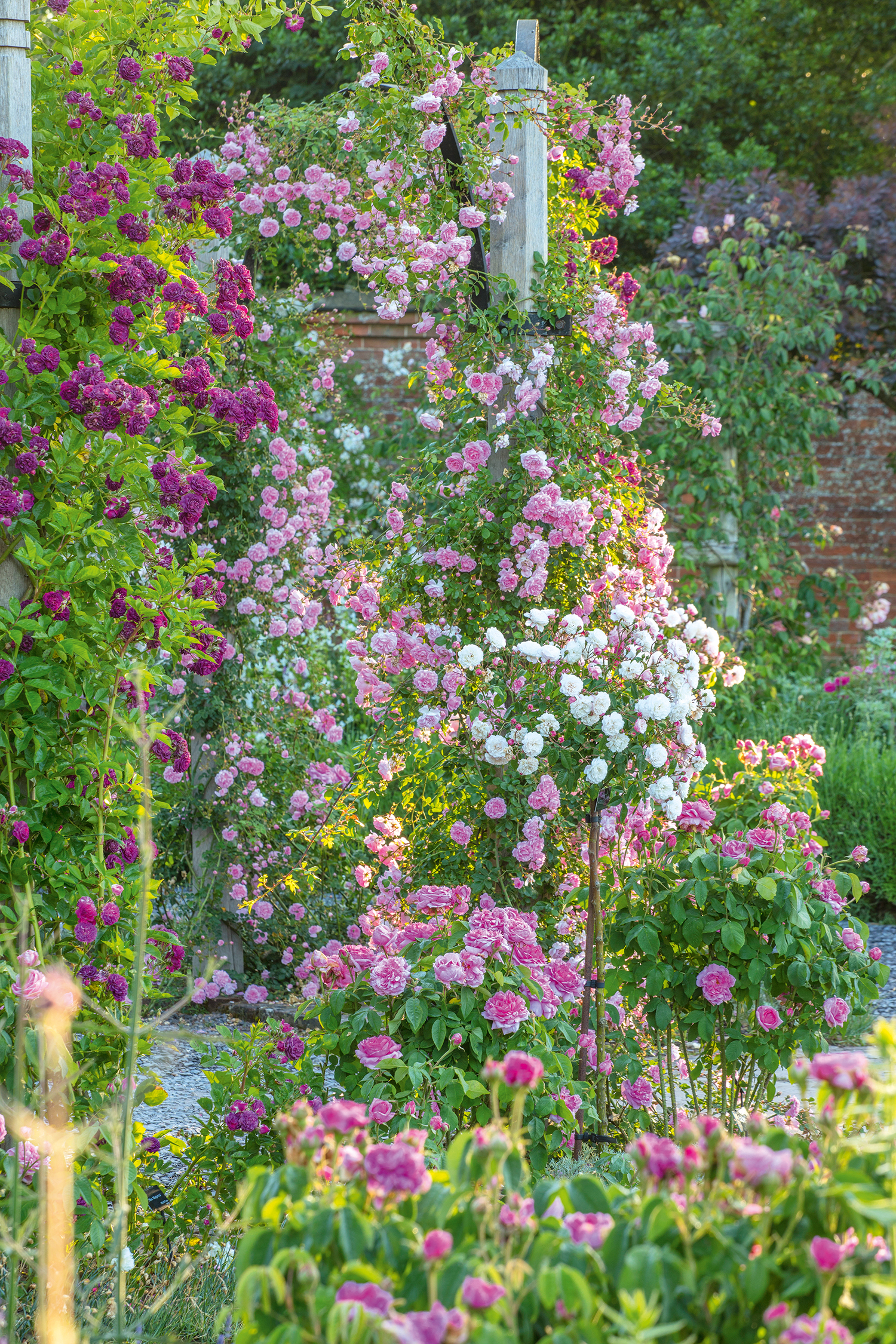Succession planning for plants? The organisation saving our National Collections
Charles Quest-Ritson is full of praise for an organisation dedicated to keeping alive Britain's widespread national plant collections.


50 years ago, in 1974, Tom Hewer said to me ‘the best way to lose a plant is to ask the RHS to look after it for you’. Prof Hewer was a very distinguished and charming plant collector and many of the bulbs he brought back from Iraq, Iran and Afghanistan are still alive and well at RHS Wisley. However, he was cross because he had also collected a swathe of nameless new Lonicera species and the RHS, he said, had let them die before even planting them out.
We cannot expect an organisation such as Kew or the RHS to conserve every plant that might be of interest to botanists, gardeners or nurserymen. There are far too many of them. The only way to preserve our heritage of plants is to run a delegated or decentralised system whereby the cultivation of plants is outsourced to gardeners with a passion for a particular genus — anything from hardy hybrid rhododendrons to pulsatillas, delphiniums or tulips.
This realisation was fundamental to the launch in 1978 of the National Council for the Conservation of Plants and Gardens: its mission statement was ‘to conserve, document, promote and make available Britain and Ireland’s rich bio-diversity of garden plants for the benefit of everyone through horticulture, education and science’. The council’s cumbersome name was later changed to Plant Heritage, but it continues to thrive by combining the technical expertise of botanists, horticulturists and conservationists with the dedication of keen amateur and professional gardeners. The RHS’s former director general, Chris Brickell, was a founding father, with Graham Stuart Thomas and Lawrence Banks, all three knowledgeable, passionate plantsmen.
Plant Heritage’s system of National Plant Collections encourages keen gardeners to take into their gardens as many species and cultivars of a type of plant as possible. The National Trust at Mottisfont Abbey in Hampshire has a National Plant Collection of old garden roses; Waterperry in Oxfordshire has a collection of saxifrages, backed by the Alpine Garden Society; and Fingal County Council maintains a collection of Potentillas at Ardgillan Castle, north of Dublin. All receive support from Plant Heritage, at Wisley.
"You worry about what will happen to your precious plants when you wake up one morning to find yourself in the Elysian fields"
Imagine that you want to make a collection of hibiscus, origanums, Japanese anemones or hardy chrysanthemums. You acquire whatever you can from commercial sources and fellow enthusiasts you meet on the web. You apply for National Plant Collection status and you have 30 happy years building up the world’s biggest and best collection of your favourite genus.
Interesting people come to see you, journalists praise you, you travel to international conferences to meet other experts and you write papers and articles to bombard opinion makers with your wisdom and knowledge. But now you are getting on in years and you worry about what will happen to your precious plants when you wake up one morning to find yourself in the Elysian fields.
Succession is the word for the problem. The conversation begins when you first take on a collection: Plant Heritage will ask what are your plans for the future of your plants when the need for succession becomes pressing? It’s often the last thing you are thinking about when you are taking on the collection in the first place, but you need to have an answer.
Exquisite houses, the beauty of Nature, and how to get the most from your life, straight to your inbox.
Plant Heritage oversees more than 700 National Plant Collections and tries to anticipate and solve the problems that afflict a Collection Holder at all stages of their trusteeship. It liaises closely with the RHS, now very supportive of its aims.
A number of recent transfers have gone swimmingly: Dr Simon Charlesworth’s collection of rosemary and lavender plants in Kent is being split into smaller segments and relocated for a group of enthusiasts to manage. The collection of pelargoniums at Fibrex, a successful nursery in Worcestershire, was so large that it has been shared between the RHS’s five gardens. And the plantswoman Margaret Owen, whose Shrewsbury garden is a treasure house of snowdrops and irises, as well as a home for four National Plant Collections in Camassia, Veratrum, Dictamnus and Nerine, appointed a horticultural executor when she died in 2014 to ensure that none of her plants was lost to cultivation.
Plant Heritage is behind all these developments. Its staff are a source of knowledge, support and encouragement and they are looking for more Collection Holders. It is a remarkable success story. What a pity it was not in existence 50 years ago when Hewer thought that the best way to conserve his newly discovered loniceras was to give them to the RHS.
Charles Quest-Ritson wrote the RHS Encyclopedia of Roses
Charles Quest-Ritson is a historian and writer about plants and gardens. His books include The English Garden: A Social History; Gardens of Europe; and Ninfa: The Most Romantic Garden in the World. He is a great enthusiast for roses — he wrote the RHS Encyclopedia of Roses jointly with his wife Brigid and spent five years writing his definitive Climbing Roses of the World (descriptions of 1,6oo varieties!). Food is another passion: he was the first Englishman to qualify as an olive oil taster in accordance with EU norms. He has lectured in five languages and in all six continents except Antarctica, where he missed his chance when his son-in-law was Governor of the Falkland Islands.
